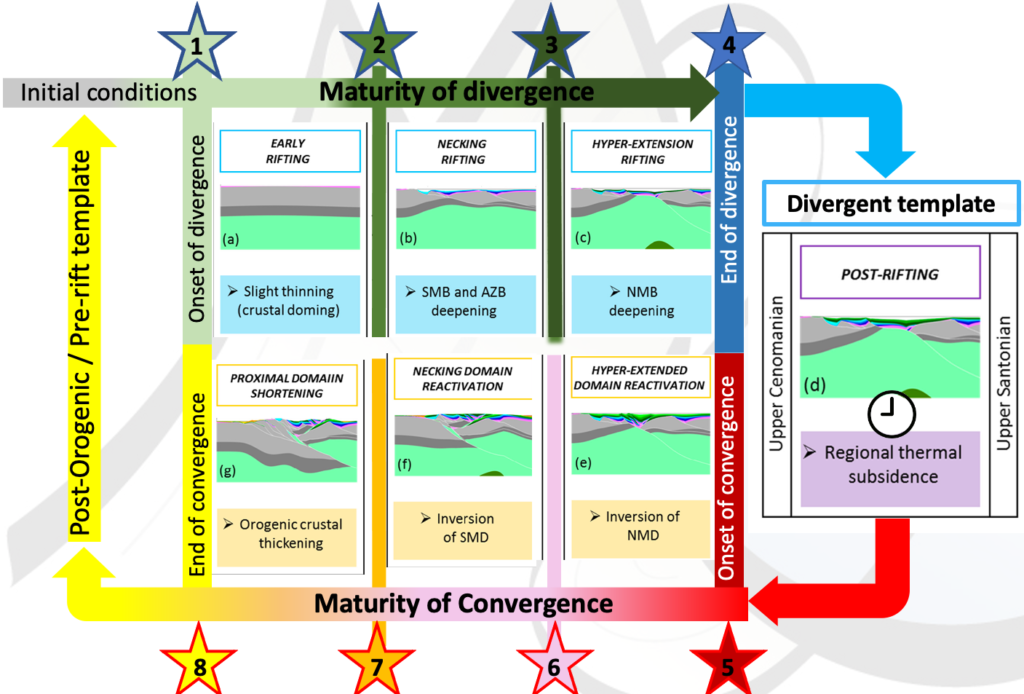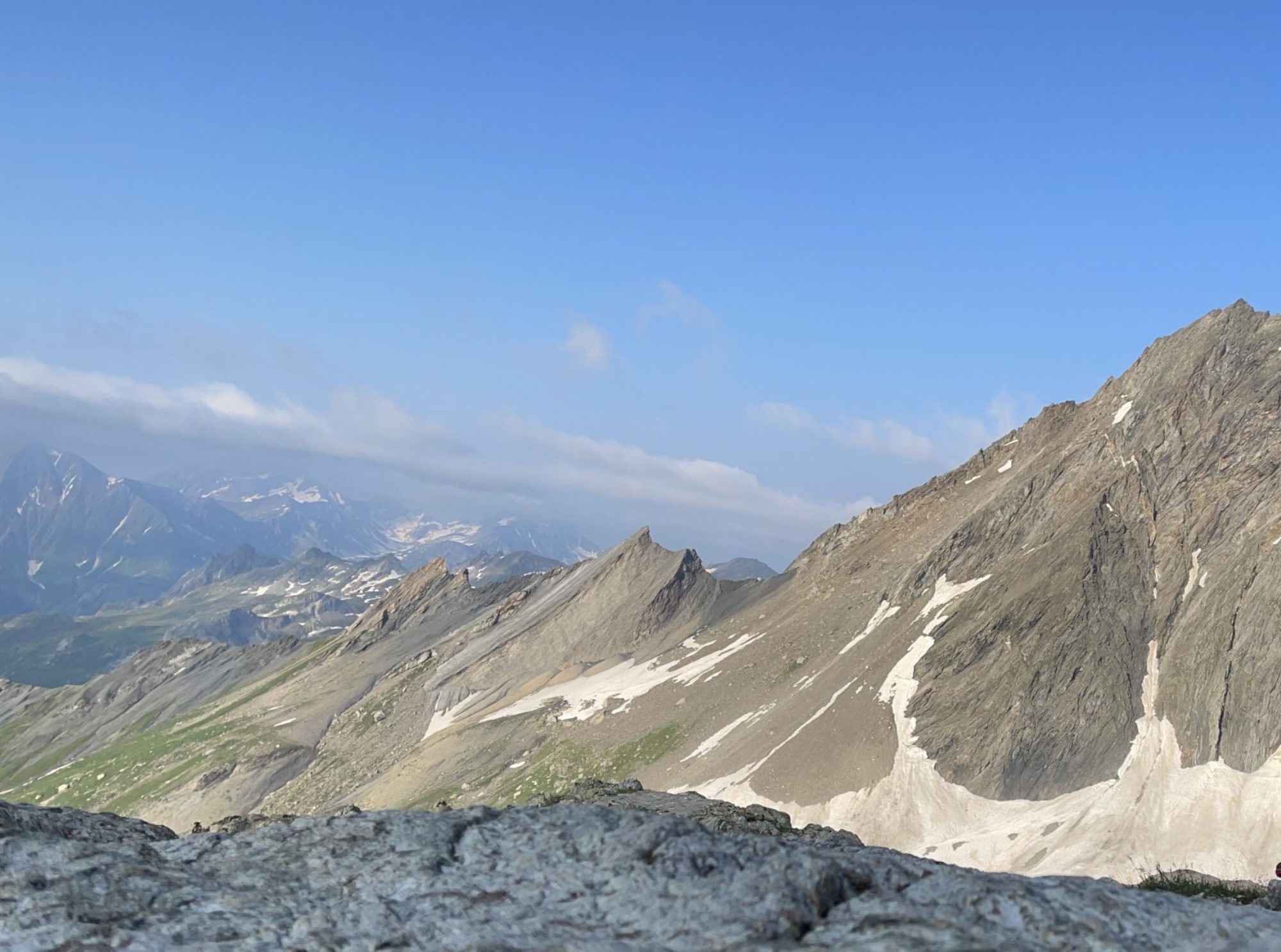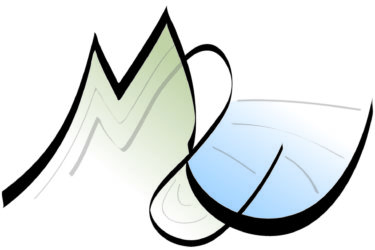For the Pyrenees, in-situ and thermochronological studies show that there is a limited cooling path of sourcing basement areas (reliefs) during this intermediate “proto-collisional” phase (e.g. Bellahsen et al., 2020, Waldner et al., PhD, 2021, Bernard et al., 2021). Detrital thermochronology however suggests that sourcing reliefs may exist out of the present-day high range (Axial Zone). Indeed, rift ages were obtained from L-T detrital thermochonology within Paleocene sediments of peripheral orogenic basins (Ternois et al., 2019, PhD). It strongly argues that sourcing reliefs may have been located further north. (within the North Pyrenean Zone) and is inherited from the former early orogenic phase made of inverted rift domains (e.g. Mouthereau et al., 2014; Tugend et al., 2015; Grool et al., 2018; Ternois et al., 2019; Gomez-Romeu et al., 2019). What was shown is that orogenic strain is actually accommodated in a diffuse way in a relatively wide area at that time, corresponding to (at least) the future axial zone as suggested by Waldner et al. (2021 & PhD). Structurally speaking, strain distribution is not expecting to generate high and located reliefs but rather limited/smoother reliefs by comparison with former and latter (strain localized) orogenic phases. If sourcing, the axial zone would therefore be smooth “dome” as suggested within Waldner’s PhD. The fact that the Paleozoic detrital component is continuously decreasing during the tectonic quiescence (Ternois et al., 2019 & PhD) further supports the limited exhumation and erosion of basement rocks (and therefore formation of reliefs) during this phase. It may also be acknowledged that convergence rates deduced from plate kinematic models (themselves based on the restoration of the Atlantic, e.g. Macchivelli et al., 2017 and references therein) agree on a significantly smaller convergence rates accommodated within the Pyrenees at that time (some are even suggesting extension that is not supported by field evidences so far). These kinematic boundary conditions would anyway result in limiting the formation of reliefs (what is then questionable is the reason of this kinematic change…).
An alternative way to get an image of the pre-collisional topographies is to study fossilized example of early orogenic systems that failed to reach a mature collision. In the Pyrenean system, the best example may be the present-day Basque belt as suggested by Ducoux et al. (2019) and Mirò et al (2020, PhD). These authors suggest that this part of the Pyrenean system never reached a mature collisional stage and stopped while inverting the rift (until the necking zone). Present-day (and Cenozoic) topographies are not related to crustal overthickening (collision) but rather due to the thin-skinned shortening of Meso-Cenozoic rocks above a near top-basement salt décollement. This would correspond to expectations as reliefs for this transitional orogenic phase.


